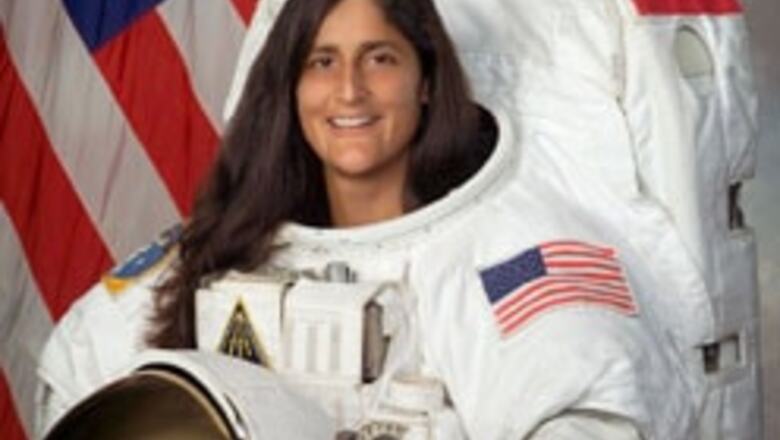
views
Washington: Indian American astronaut Sunita Williams and Commander Michael Lopez-Alegria spent the week performing experiments related to human adaptation to space and preparing for upcoming additions to the International Space Station.
The space duo performed scientific experiments, conducting another session with the Anomalous Long-Term Effects in Astronauts' Central Nervous System (ALTEA) to measure exposure to cosmic radiation, US space agency NASA said.
For 90 minutes, they wore an instrumented helmet containing six different particle detectors that measure radiation exposure, brain electrical activity and visual perception.
ALTEA will further the understanding of radiation impact on the human central nervous and visual systems, especially the phenomenon of crew members seeing flashes of light while in orbit.
They also tested their hand-eye coordination during the Test of Reaction and Adaptation Capabilities (TRAC) experiment.
TRAC studies the theory that while the brain is adapting to space, it is unable to provide the resources necessary to perform normal motor skills, such as hand-eye coordination.
For TRAC, the astronauts use a laptop and a joystick to control the position of a cursor and use a reaction time box to measure their responses to audio and visual cues.
Understanding how the brain adapts to microgravity could lead to improved procedures for activities requiring precise motor skills.
Williams and Lopez-Alegria also completed the last of the internal assembly tasks for the start up later this year of the new Oxygen Generation System in the Destiny laboratory.
The astronauts installed sound-deadening equipment and an electrical cable and reconnected a wastewater hose for the hardware delivered on space shuttle mission last summer.
The Oxygen Generation System will be required when the station crew size expands to six people. Slated for activation during the next expedition, it will function initially as a backup to the Russian Elektron system, which supplies oxygen for the station's crew.
Meanwhile, Russian cosmonaut Mikhail Tyurin prepared for the arrival of the first European Space Agency cargo-carrying Automated Transfer Vehicle (ATV).
Russian station officials and US reached an agreement this week on a plan to prepare for the arrival of the Soyuz TMA-10, which will deliver the Expedition 15 crew to the station.
The plan is to relocate the Soyuz TMA-9 craft from the Earth-facing port of the Zarya module to the aft port of the Zvezda module on March 29.
As a result, the next station resident crew will not need to perform the manoeuvre to reach Zarya as its final destination.
To make room for the Soyuz, the ISS Progress 23 cargo ship, currently docked to Zvezda, will undock March 27, plunging into the Earth's atmosphere.
Officials from both sides also agreed to reboost the station March 15, using the Progress 23 engines to place the station at the correct altitude for the Soyuz TMA-10 capsule, scheduled to launch April 7 and dock to Zarya April 9.
The Soyuz TMA-9 is scheduled to undock Apr 20, returning the Expedition 14 crew to Earth.

















Comments
0 comment